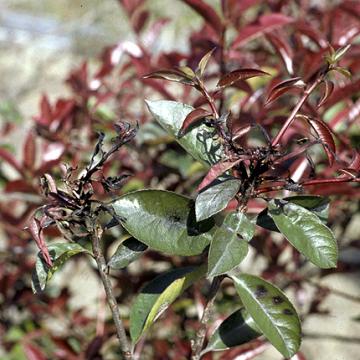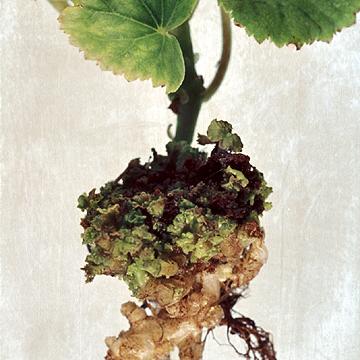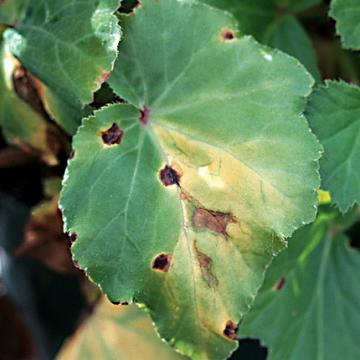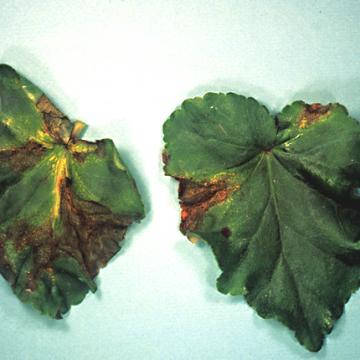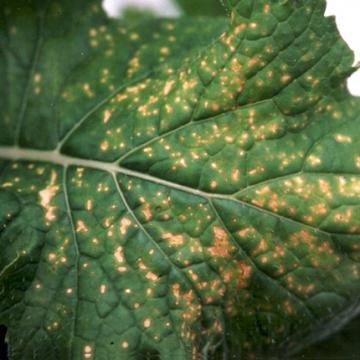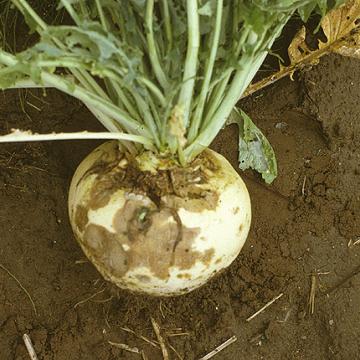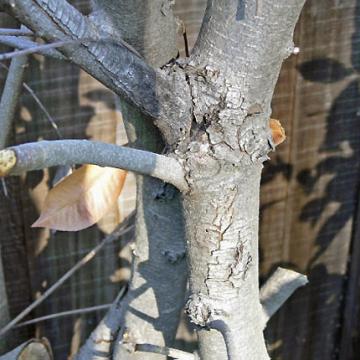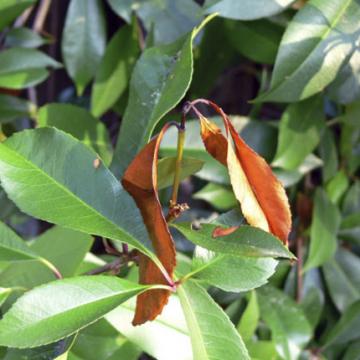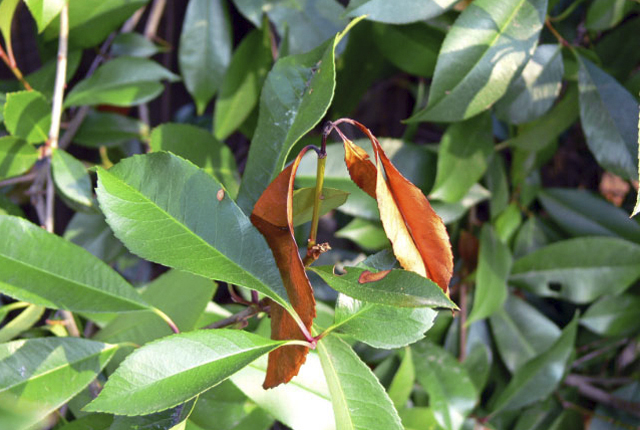DISEASE: Bacterial blight
HOST: Photinia
Symptoms of photinia bud blight shown here are similar to those of blast of pear and apple, caused by Pseudomonas syringae pv. syringae.
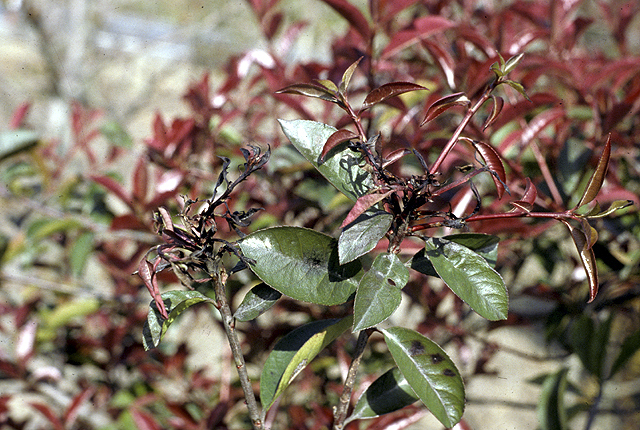
Bacterial blight | Photinia
DISEASE: Bacterial blight
HOST: Photinia (Photinia glabra)
PATHOGEN: Pseudomonas syringae pv. photiniae
SOURCE: M. Goto
DISEASE: Bacterial fasciation (Leafy gall)
HOST: Begonia
Leafy gall on stem.
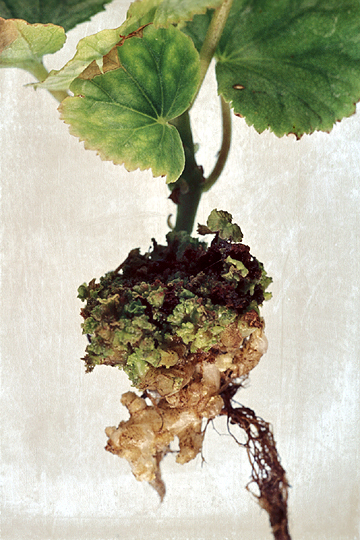
Bacterial fasciation (Leafy gall) | Begonia
DISEASE: Bacterial fasciation (Leafy gall)
HOST: Begonia (Begonia sp.)
PATHOGEN: Rhodococcus fascians
SOURCE: M. Geesteranus, J. van der Wolf
DISEASE: Bacterial leaf spot (Blight)
HOST: Begonia
Initial symptoms appear as small, blisterlike lesions. As lesions age, they enlarge, producing broad patches of necrotic leaf tissue.
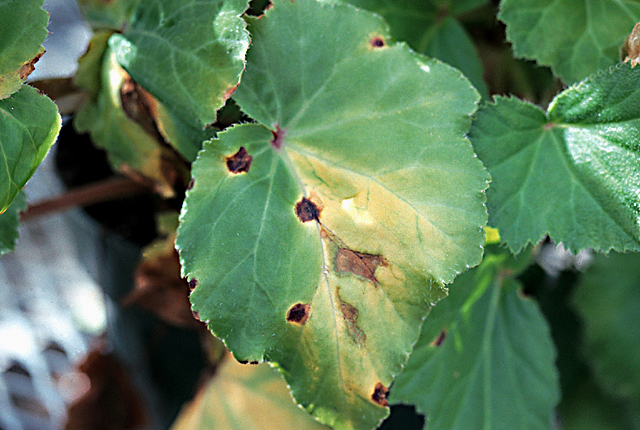
Bacterial leaf spot (Blight) | Begonia
DISEASE: Bacterial leaf spot (Blight)
HOST: Begonia (Begonia sp.)
PATHOGEN: Xanthomonas axonopodis pv. begoniae
PATHOGEN SYNONYM: Xanthomonas campestris pv. begoniae
SOURCE: APS
DISEASE: Bacterial leaf spot (Blight)
HOST: Begonia
Advanced stage of disease with dark, large necrotic areas on leaves and interveinal chlorosis.
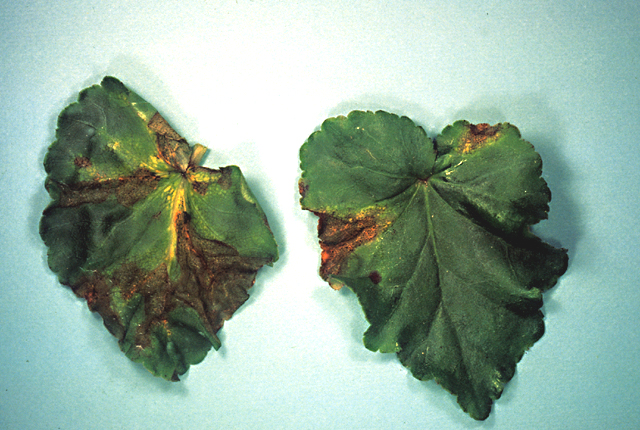
Bacterial leaf spot (Blight) | Begonia
DISEASE: Bacterial leaf spot (Blight)
HOST: Begonia (Begonia sp.)
PATHOGEN: Xanthomonas axonopodis pv. begoniae
PATHOGEN SYNONYM: Xanthomonas campestris pv. begoniae
SOURCE: APS
DISEASE: Bacterial leaf spot
HOST: Turnip
Leaf with many tan, dry-appearing, angular spots.
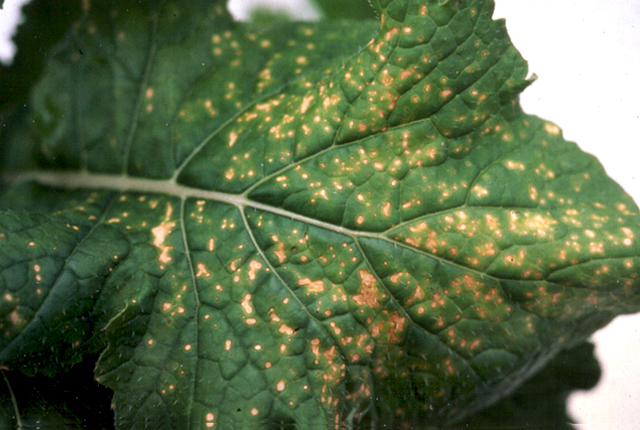
Bacterial leaf spot | Turnip
DISEASE: Bacterial leaf spot
HOST: Turnip (Brassica rapa)
PATHOGEN: Xanthomonas campestris pv. armoraciae
SOURCE: R. Campbell
DISEASE: Bacterial soft rot
HOST: Turnip
Rotted root that likely was infected through cracks.
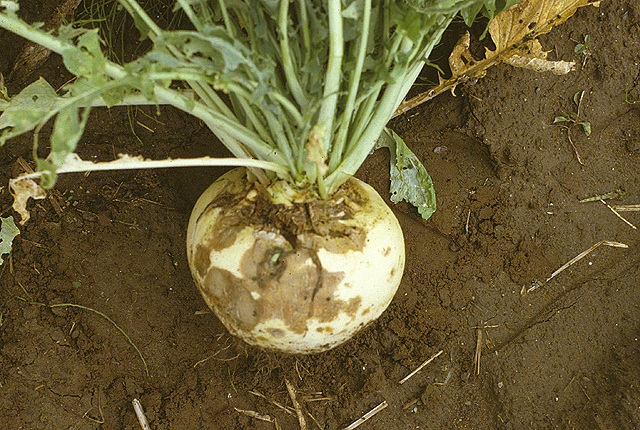
Bacterial soft rot | Turnip
DISEASE: Bacterial soft rot
HOST: Turnip (Brassica rapa)
PATHOGEN: Pectobacterium carotovorum
PATHOGEN SYNONYM: Erwinia carotovora subsp. carotovora
SOURCE: J. Togashi, M. Goto
DISEASE: Fire blight
HOST: Photinia
Fire blight cankers on photinia.
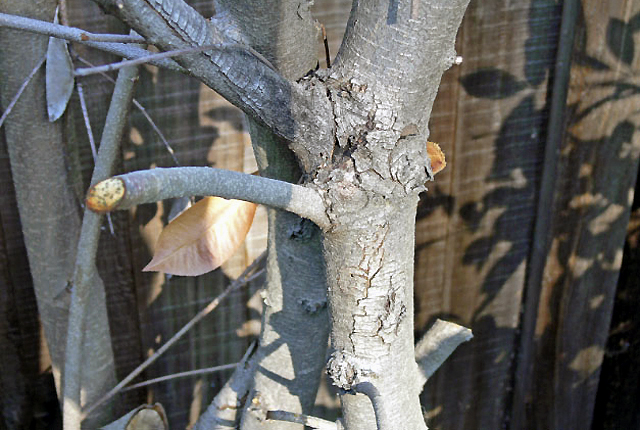
Fire blight | Photinia
DISEASE: Fire blight
HOST: Photinia (Photinia fraseri)
PATHOGEN: Erwinia amylovora
SOURCE: M. Schroth


